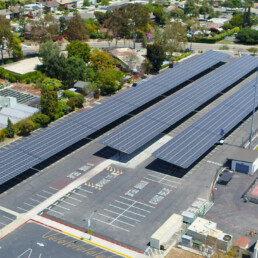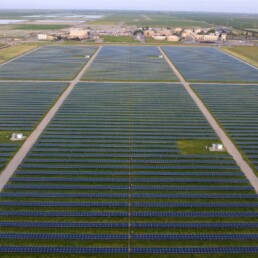A REC, also known as a Renewable Energy Credit (REC) is a tradable certificate that represents the environmental attributes of a certain quantity of renewable energy generation. Think of it as a deed of ownership that can be bought and sold among various entities. The ownership does not apply to the actual electricity generated, but to the carbon-free quality of that electricity. Sound abstract? We hope this post makes RECs a bit easier to understand.
Consider the following example to help clarify the concept:
Jane and Joe purchase a solar array which is installed on the roof of their home. The panels generate electricity which is used to offset the electricity that the couple would otherwise purchase from their utility. Over the course of a year, the panels generate enough electricity to receive one REC (a REC represents 1 megawatt-hour of generation). Jane and Joe own this REC, but because they have no use for it, they sell it to their utility for the market rate. They can then use the money from this sale to help finance their solar array.
The basic idea behind a REC is that the electricity generated from a renewable energy system has two values: a commodity value and an environmental value. Utilities (and some other entities) will purchase the environmental value of the electricity to comply with state targets about how much renewable energy they must generate. These targets are commonly codified laws called Renewable Portfolio Standards, or an RPS, and RECs help the states track their progress toward meeting them.
The only catch for Jane and Joe is that when they agree to sell all the RECs from their system, they cannot make the claim that they are “generating green energy”, because they no longer own the part of the electricity that is “green”. The utility, or whichever entity purchases the RECs, owns it. Jane and Joe can say that they are hosting a renewable energy system on their property and are contributing to a greener utility grid.
The Jane and Joe example is just one way in which RECs can be transacted. Sometimes the RECs are sold before the system is installed (the number of RECs is estimated at this point) and the proceeds of this transaction are used to reduce the cost of the renewable energy system. This is typically called an upfront REC sale.
Sometimes, entities that host renewable energy systems on their property will choose to retain their RECs instead of selling them so they can continue to make claims that they are “generating clean energy”. This is particularly advantageous for municipalities and businesses with renewable energy procurement goals, such as members of the RE100 initiative. In most cases, the exact configuration of REC ownership and sales will be dictated by a series of contracts that exist between the system owner, the REC buyer, and sometimes, the system host.
What is the impact nationwide?
For solar customers, RECs can represent an income stream that helps to reduce the cost of the solar energy under a Power Purchase Agreement. If you’re buying electricity from a community solar installation, that electricity is cheaper because the RECs helped to buy down that cost.
RECs only have tradeable value in certain markets and their prices often jump around as demand and supply move around.
Want to learn more?
ForeFront Power can help you navigate this through a free consultation. Just contact us by following the link below.
Interested in learning more?
We would love to discuss how our solutions might be a fit for your organization. Contact one of our solar, storage, or e-mobility experts today:








